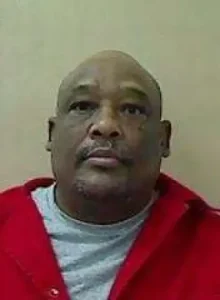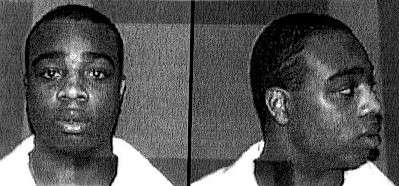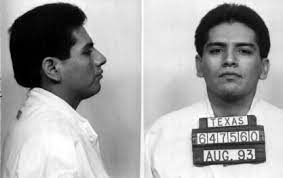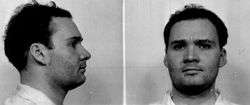Keith East Murders 2 In North Carolina
Keith East was sentenced to death by the State of North Carolina for the murder of his Uncle and Aunt
According to court documents Keith East would go to the home of Dr. Harold Delaney, and his wife, Geraldine, and proceeded to beat the elderly couple to death with a baseball bat before robbing the home
Keith East was arrested, convicted and sentenced to death
Keith East Photos

Keith East FAQ
Where Is Keith East Now
Keith East is incarcerated at Central Prison
Keith East Case
At trial, the State presented evidence tending to show that on 2 August 1994, the victims, Dr. Harold Delaney and his wife, Mrs. Geraldine East Delaney, were visiting Pilot Mountain, North Carolina, from their home in Maryland. Dr. Delaney was seventy-five years old and was in semi-retirement after a distinguished chemistry career in which he had worked on the Manhattan Project and had served in numerous prominent academic positions and presidential appointments. Mrs. Delaney was seventy-one years old and a retired teacher. The Delaneys were the defendant’s aunt and uncle. They were staying in the home of Mrs. Delaney’s mother, Mrs. Sophia East, who is also the grandmother of the defendant. The Delaneys bought the house for Mrs. East before she was forced to go to a nursing home. The Delaneys stayed at the house whenever they visited Mrs. East and the rest of their family, many of whom lived in close proximity to the house.
On the afternoon of 2 August 1994, at approximately 5:00 p.m., Mrs. Delaney was visiting Ms. Ada Lovell while Dr. Delaney napped. Ms. Lovell lives across the street from the house in which the Delaneys were staying, which Ms. Lovell described as being within “spitting distance.” The two women were talking when Ms. Lovell’s grandson announced that the defendant (Keith East) had pulled up in the driveway of the Delaneys’ house. Mrs. Delaney suddenly proclaimed, “Oh, I’ve got to go. Harold is asleep, and my pocketbook is up there.” Mrs. Delaney quickly departed. She intercepted the defendant (Keith East) before he could go in the house, and the two engaged in some sort of conversation in front of the house. This was the last time Ms. Lovell saw Geraldine Delaney alive.
The State presented further evidence tending to show that during the evening of 2 August 1994, the defendant (Keith East) went to a store and then to the house of an acquaintance at approximately 8:00 p.m. There, defendant drank some wine and listened to the radio. Later, the defendant got a ride home, but he asked the driver to drop him off in front of his grandmother’s house-the house where the Delaneys were staying. It was then approximately 10:30 p.m.
On 4 August 1994, the defendant (Keith East) went to the apartment of his former girlfriend, Deborah Hartman, in Winston-Salem. The defendant was in obvious distress. He was crying, was acting agitated and was pacing continuously. Defendant (Keith East) told Ms. Hartman that he had to either leave the country, go to jail or commit suicide. He also said that he was in serious trouble and that he needed $169 for a bus ticket to El Paso, Texas. Upon repeated questioning by Ms. Hartman, the defendant eventually told her that he and his uncle, Dr. Delaney, had gotten into an argument, that Dr. Delaney had threatened him with a knife and that he had “snapped” and lost control because he was high on drugs at the time. Defendant (Keith East) said that he had hit his aunt and uncle with what he thought was a baseball bat and that both were dead. When asked what the argument was about, the defendant stated, “About him being him and me being me.” Ms. Hartman was afraid the defendant might just be trying to scam money from her for drugs, so she took defendant to the teller machine and withdrew $60 for him. Ms. Hartman then dropped the defendant off in the parking lot of the apartments and watched him depart. Defendant (Keith East)drove off in a Buick Park Avenue, which Ms. Hartman identified at trial as belonging to the Delaneys.
Ms. Hartman, in distress by this time herself, made a phone call to the Pilot Mountain police and, without giving her name, reported that something might have happened to the Delaneys. When the officers arrived, they found the badly beaten body of Dr. Delaney just inside the door of the house and the similarly beaten body of Mrs. Delaney lying in the hall. A search of the house revealed Mrs. Delaney’s pocketbook in the kitchen with a wallet lying next to it. No folding money was found in the wallet or the rest of the house, despite the fact that the Delaneys had withdrawn several hundred dollars from their Maryland bank account shortly before their deaths. Many of the drawers in the cabinets and in the furniture of the house were ajar. No knives or other weapons besides normal kitchen utensils were found anywhere in the house.
Evidence gathered from the crime scene and from autopsies conducted on the bodies established that the Delaneys were killed by multiple blows to the head with a blunt-force instrument. In the opinions of the experts who testified, both Dr. and Mrs. Delaney were in standing positions when they were first struck. Blood-spatter patterns established that they were also struck numerous times after they fell to the floor. Mrs. Delaney suffered ten to eleven separate wounds. She had lacerations all over her head and face, bones in her face were broken, and her skull had been fractured with such force that her brain was exposed. Mrs. Delaney’s ribs were also broken, and there was bleeding in the heart cavity. As many as four of her wounds were defensive in nature, including one so severe that it amputated one of the fingers of her right hand. Dr. Delaney was struck at least fourteen separate times. He also suffered numerous lacerations and broken bones, including a fractured skull. Although Dr. Delaney suffered at least four blows to the arms that were indicative of defensive wounds, the majority of Dr. Delaney’s wounds were to the back of the head and the upper back area. This indicated that Dr. Delaney’s assailant had struck him from behind. These injuries caused the Delaneys significant pain and suffering prior to their deaths.
The defendant testified at trial and stated that on 2 August 1994, he bought over $300 worth of crack cocaine, which he used between 2:00 p.m. and that evening. He also drank some wine. Defendant claimed that all he could remember about the killings was that he was visiting his uncle, Dr. Delaney, and that he suddenly felt “threatened.” As a result, defendant grabbed the handle of some object, and then everything went blank. Defendant testified that the next thing he remembered was driving in a car and feeling that he had done something terrible. The defendant then said he called home. After talking with his mother, the defendant turned himself in to the police in El Paso, Texas.
The Delaneys’ car was found in Beaumont, Texas. An investigation by the North Carolina State Bureau of Investigation revealed the presence of the defendant’s fingerprints on the Delaneys’ car. Defendant’s fingerprints were also on several items in the car, including a page in a road atlas which contained a map of the United States.
The defense claimed the defendant suffered from psychological deficits and substance abuse problems. Defendant’s psychiatrist, Dr. John Warren, described the defendant as a crack cocaine abuser who suffered from chronic depression. Dr. Warren also stated that, at the time the Delaneys were killed, defendant was intoxicated with cocaine and was suffering from an unstable personality and neuropsychological deficits. Dr. Warren’s opinion was that defendant’s mental condition prevented him from forming, or greatly impaired his ability to form, the specific intent to kill.
Several witnesses for the State, including some from defendant’s family, testified that they had never known the defendant to act as though he was on drugs or to “lose control.” Several witnesses also testified that the defendant did not appear to be intoxicated from drugs or alcohol on the day of the murders, and that he was extremely coherent and polite even up until the time he was dropped off in front of the Delaneys’ house. Evidence was presented, however, that the defendant experienced extreme animosity toward the Delaneys. The defendant felt that the Delaneys were pretentious and that they looked down on him for having done nothing with his life. Two witnesses testified that the defendant had wished death on at least Mrs. Delaney during two recent visits. In June of 1994, during the visit just before the fateful August visit, defendant stated about Mrs. Delaney, “That bitch is back. I hate that bitch. I wish she was dead.”
https://caselaw.findlaw.com/court/nc-supreme-court/1206544.html







